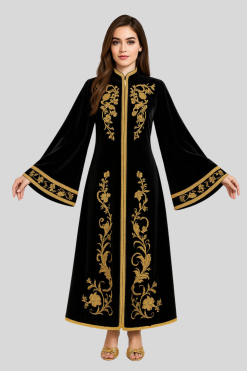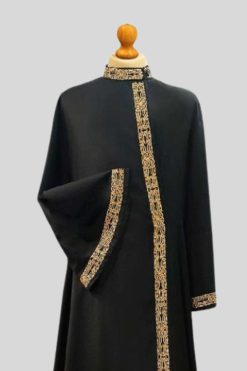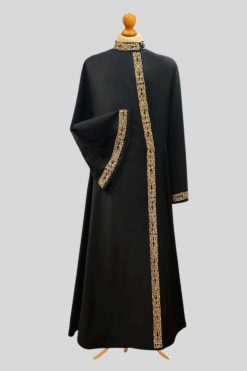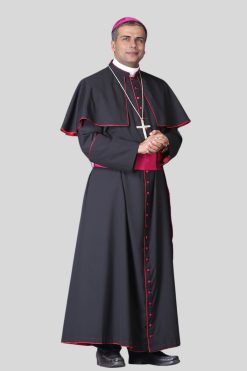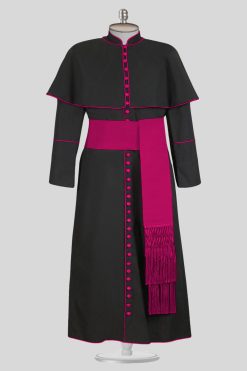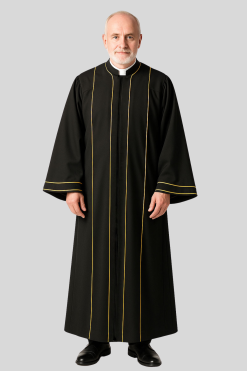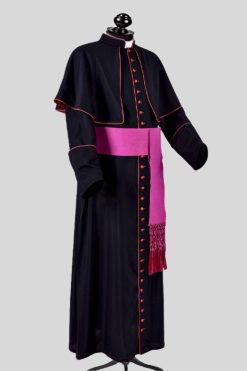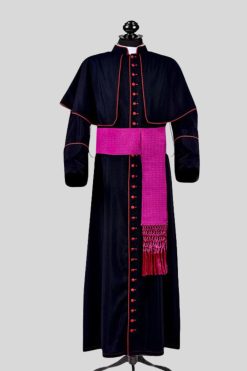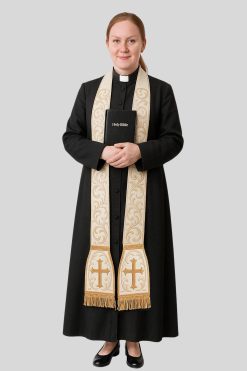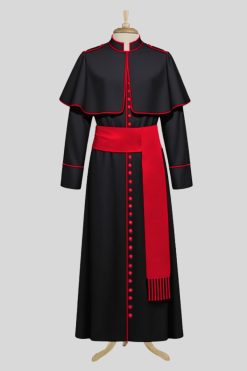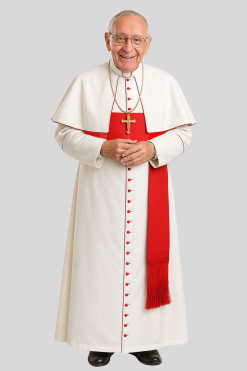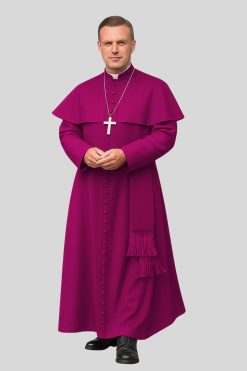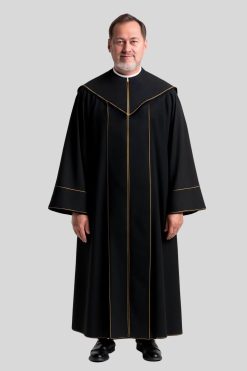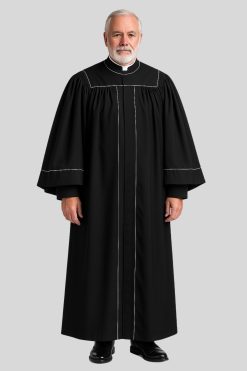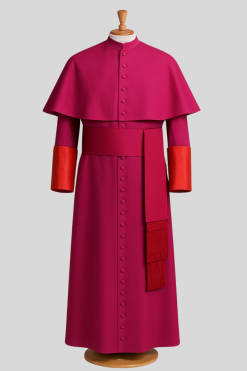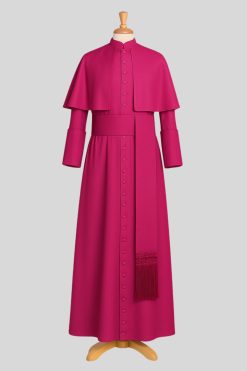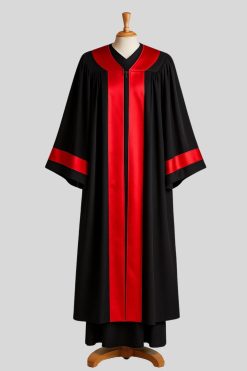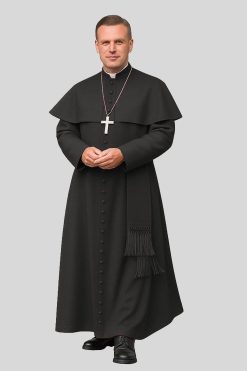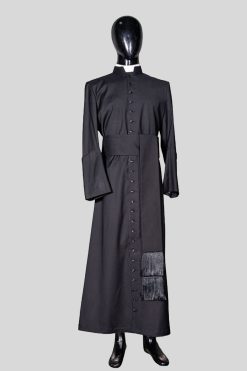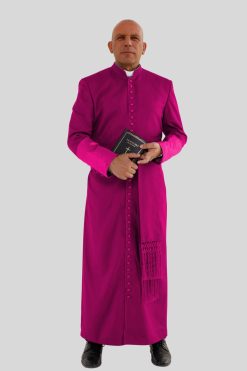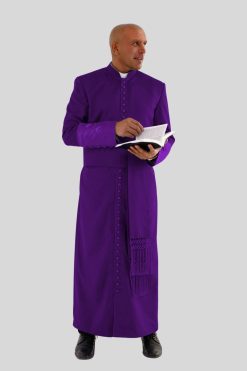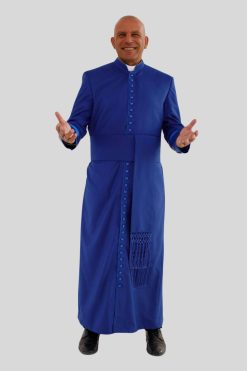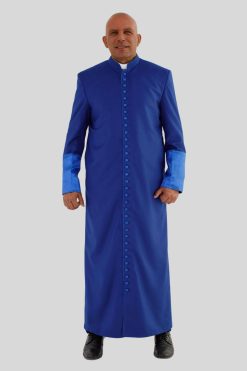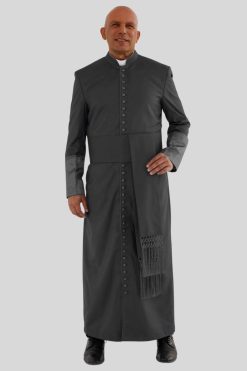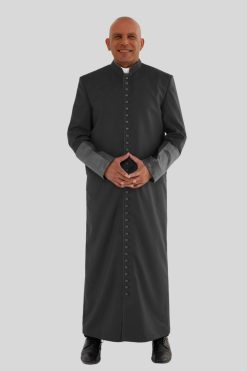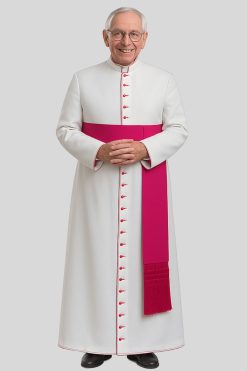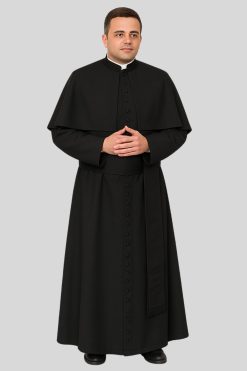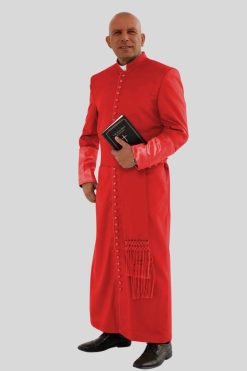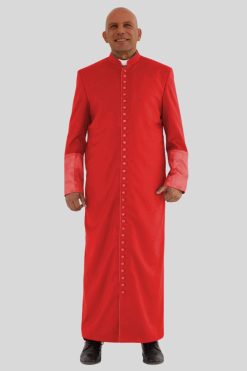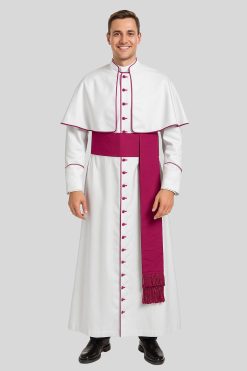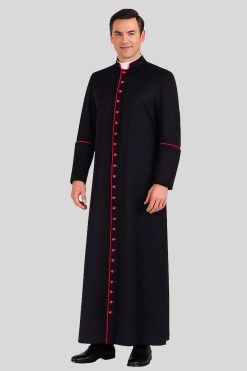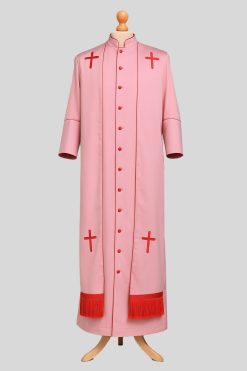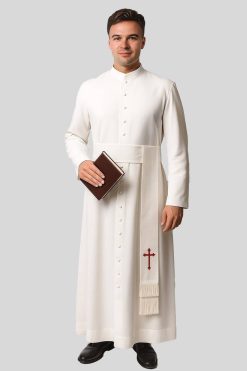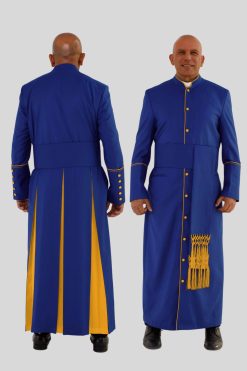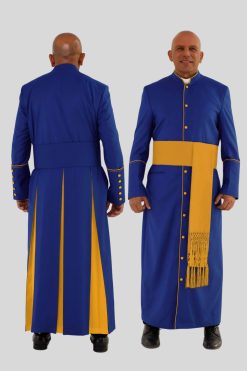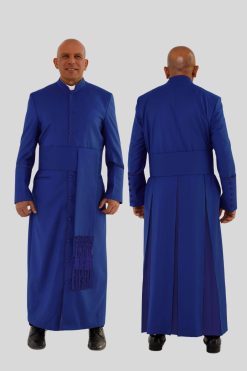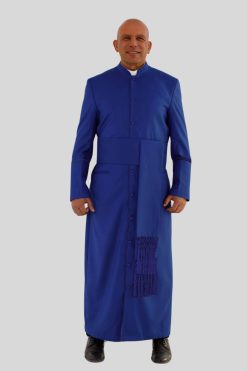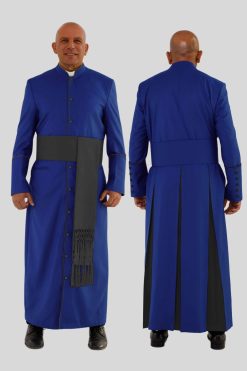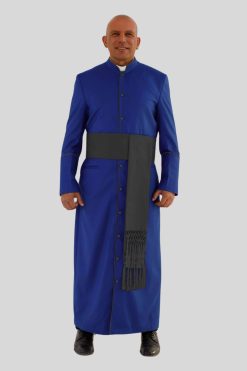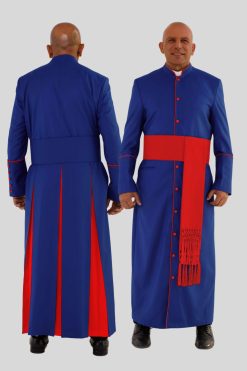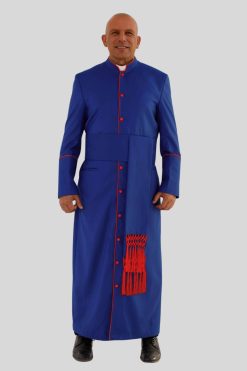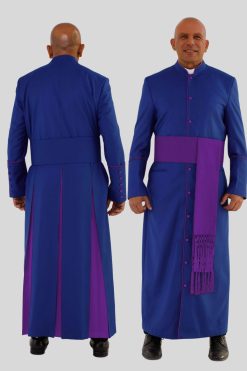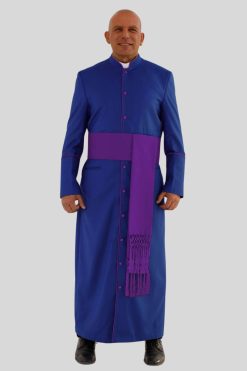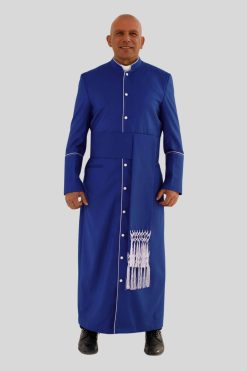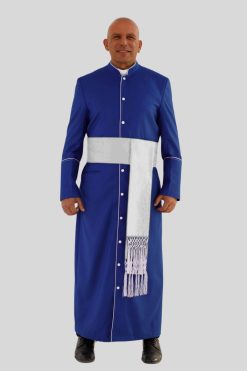No products in the cart.
Return To ShopHoly Clergy
Size Guide of Clergy Robes & Cassock for Women
Find Your Size
Enter your measurements below for personalized size recommendations.
Measurement Units:
Sizing Chart of Clergy Robes & Cassock for Women (Inches)
| Size | Back Length | Height | Max Chest | Max Waist | Sleeve | Neck |
|---|---|---|---|---|---|---|
| X Small - Short | 48" | 5'0" to 5'1" | 32" | 29" | 28" | 13" |
| X Small - Regular | 50" | 5'2" to 5'3" | 32" | 29" | 29" | 13" |
| X Small - Long | 52" | 5'4" to 5'6" | 32" | 29" | 30" | 13" |
| Small - Short | 50" | 5'2" to 5'3" | 35" | 32" | 29" | 14" |
| Small - Regular | 52" | 5'4" to 5'5" | 35" | 32" | 30" | 14" |
| Small - Long | 54" | 5'6" to 5'7" | 35" | 32" | 31" | 14" |
| Medium - Short | 52" | 5'4" to 5'5" | 38" | 35" | 30" | 15" |
| Medium - Regular | 54" | 5'6" to 5'7" | 38" | 35" | 31" | 15" |
| Medium - Long | 56" | 5'7" to 5'8" | 38" | 35" | 32" | 15" |
| Large - Short | 54" | 5'6" to 5'7" | 42" | 39" | 31" | 16" |
| Large - Regular | 56" | 5'7" to 5'8" | 42" | 39" | 32" | 16" |
| Large - Long | 58" | 5'9" to 5'10" | 42" | 39" | 33" | 16" |
| X Large - Short | 56" | 5'7" to 5'8" | 46" | 43" | 32" | 17" |
| X Large - Regular | 58" | 5'9" to 5'10" | 46" | 43" | 33" | 17" |
| X Large - Long | 60" | 5'11" to 6'0" | 46" | 43" | 34" | 17" |
| XX Large - Short | 58" | 5'9" to 5'10" | 50" | 47" | 33" | 18" |
| XX Large - Regular | 60" | 5'11" to 6'0" | 50" | 47" | 34" | 18" |
| XX Large - Long | 62" | 6'0" to 6'1" | 50" | 47" | 35" | 18" |
How to Measure for Clergy Robes & Cassock for Women
Follow these step-by-step instructions to ensure the perfect fit for your clergy garments. Have someone assist you for the most accurate measurements.
Chest Measurement
Step 1: Wear a well-fitting shirt or undergarment
Step 2: Wrap the measuring tape around the fullest part of your chest
Step 3: Keep the tape parallel to the floor and snug but not tight
Step 4: Breathe normally and record the measurement
💡 Tip: This is the most important measurement for proper fit
Height Measurement
Step 1: Stand straight against a wall without shoes
Step 2: Keep your feet together and look straight ahead
Step 3: Have someone mark the top of your head on the wall
Step 4: Measure from the floor to the mark
💡 Tip: Determines the proper length (Short, Regular, or Long)
Waist Measurement
Step 1: Find your natural waistline (narrowest part of torso)
Step 2: Wrap the tape around your waist comfortably
Step 3: Don't suck in your stomach - breathe normally
Step 4: The tape should be snug but not constricting
💡 Tip: Usually located just above your hip bones
Sleeve Length
Step 1: Bend your arm slightly at the elbow
Step 2: Measure from the center back of your neck
Step 3: Go over the shoulder and down to your wrist bone
Step 4: The sleeve should end at your wrist bone
💡 Tip: Bend your arm for a more comfortable fit
Neck Measurement
Step 1: Wrap the tape around the base of your neck
Step 2: Keep one finger between the tape and your neck
Step 3: The tape should sit where a collar would rest
Step 4: Ensure you can breathe and swallow comfortably
💡 Tip: Add ½ inch for comfort if wearing a clerical collar
Shoulder Width
Step 1: Stand with arms relaxed at your sides
Step 2: Measure from the edge of one shoulder to the other
Step 3: Go across the back at the widest point
Step 4: Keep the tape straight and level
💡 Tip: This ensures proper drape and comfort

